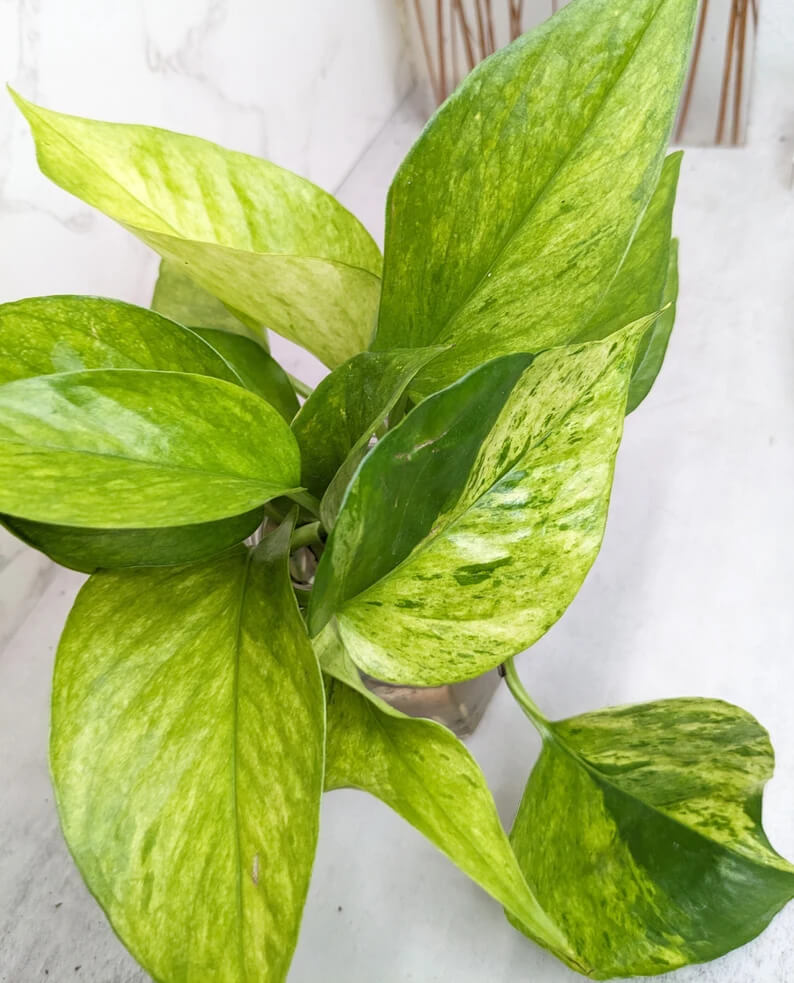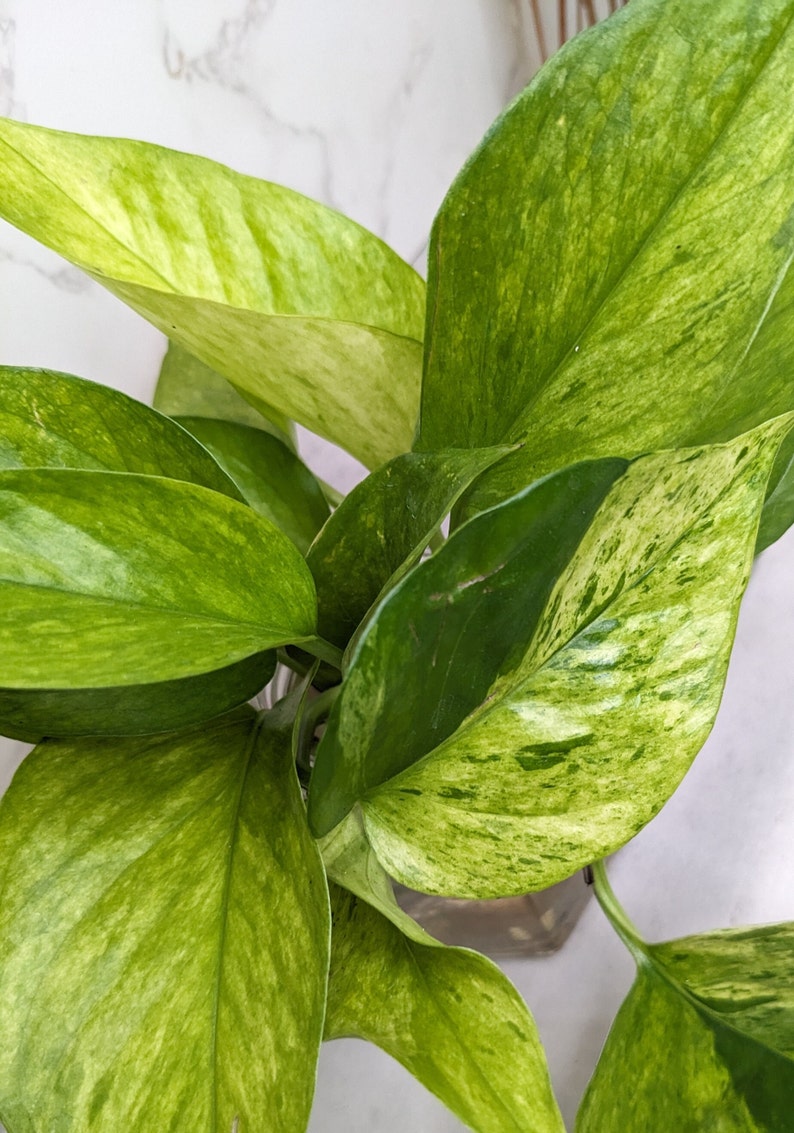The Jessenia Pothos is a beautiful pothos variety houseplant. It’s popular for its limey-green variegation. Learn how to care for the Jessenia pothos and its variegated leaves.
Jessenia Pothos Overview
The Epipremnum aureum “Jessenia,” also known as the Jessenia Pothos, is one of the many pothos varieties. It has green, heart-shaped leaves with yellow variegation on a darker green leaf bed.
It is a slow grower compared to other pothos varieties, but it does mature into a nice full vining plant for a high perch or hanging flowerpot.
You may find that it appears similar to the Marble Queen Pothos, but when examined closely, it is evident that each is a unique cultivar in its own right. The Jessenia distinguishes itself by its yellow-green variegations.
Jessenia Pothos Plant Care Guide
Soil for the Jessenia Pothos
Well-draining soil is crucial to your plant’s health. It will provide both moisture and nourishment to your Jessenia pothos.
This plant does not require a special soil bed, so any good quality, basic potting soil will be fine as long as it drains well.
You may want to add one-third perlite to two parts of potting soil to ensure adequate drainage along with a pot with several draining holes or mix in a bit of succulent potting mix.
A terracotta pot is a good choice as it will help dissipate excess moisture in the soil bed more quickly.
Jessenia pothos also like slightly acidic soil, so a soil pH level measuring between 6.1 and 6.5 is ideal.
Temperature for the Jessenia Pothos
A Jessenia Pothos does well when cultivated in a comfortable home temperature.The ideal temperature range is between 65° and 80° Fahrenheit.
It should not be placed in temperatures that are cooler than 50°F or higher than 90°F. This plant is not frost-tolerant, so it can freeze and die easily.
If you want to grow Jessenia plants outdoors, it’s best when raised in USDA zones 10 and 11.
Light for the Jessenia Pothos
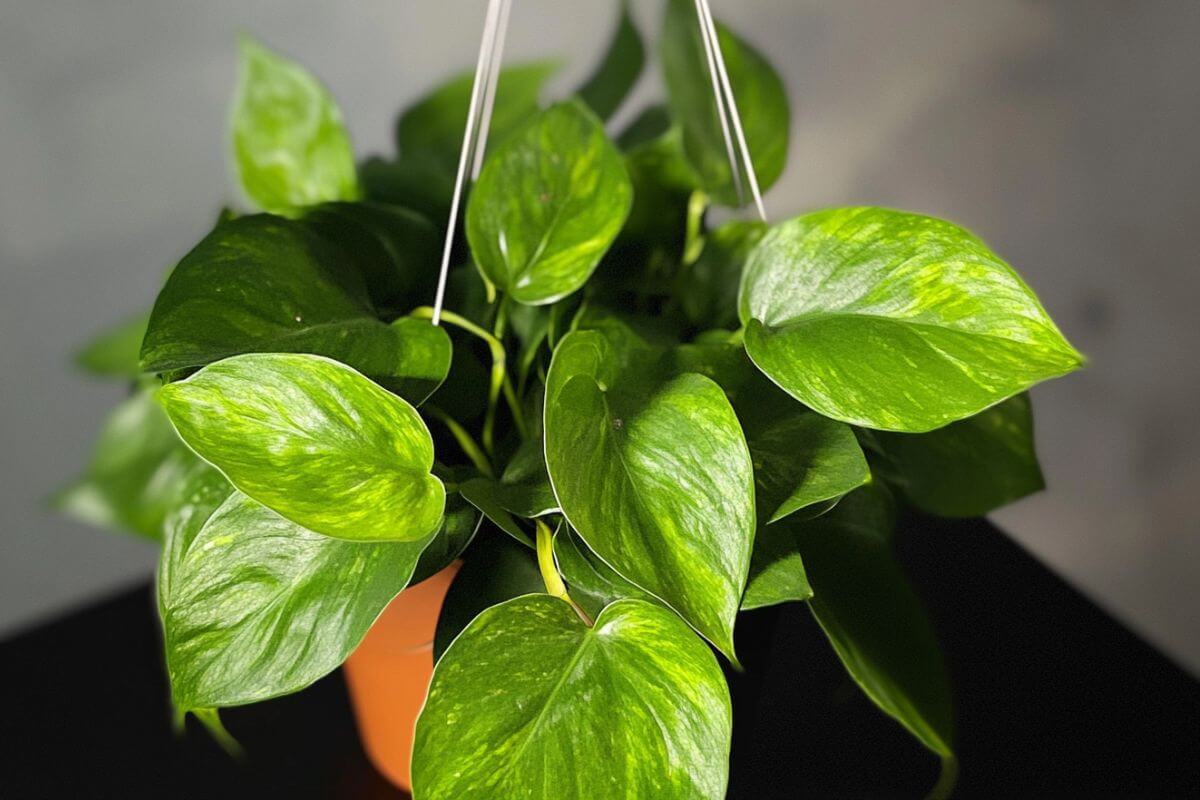
A Jessenia Pothos can tolerate all types of lighting conditions except for no light at all or direct sunlight exposure. From low light to very bright indirect light, your Jessenia can thrive.
It cannot tolerate direct sunlight and its foliage risks scorching. If your Jessenia gets too much sun, the leaves will begin to fade and burn.
On the other hand, if the Jessenia gets too little light, you may notice that the variegation slowly disappears. That will leave solid green leaves.
The green patterns on leaves are essential to the plant’s well-being. These are the parts that contain chlorophyll, which in turn activates photosynthesis, producing nutrients and energy for the plant.
If a plant is not receiving sufficient light, it will attempt to produce a larger green area on foliage to increase photosynthesis.
The Jessenia variegation on the leaves will let you know if your pothos is happy with the amount of light it is getting.
Water for the Jessenia Pothos
The Jessenia Pothos is quite forgiving should you forget to water it, but don’t make it a habit. It can miss a watering or two, but a regular watering schedule will contribute to the plant’s health and beauty.
If your Jessenia is underwatered, its leaves will droop, and become dry and dull looking. You can check the soil moisture by poking your finger a few inches into the soil bed, or by using a moisture meter. When the soil feels dry to the touch, water it.
Beware of soggy soil as it can lead to root rot. Overwatering can be fatal to your plant.
A good watering technique is to soak your pothos in a sink or bathtub by opening the faucet for ten to fifteen seconds. Then leave your plant in the sink for five to ten minutes to let the excess water drain out completely.
Humidity for the Jessenia Pothos
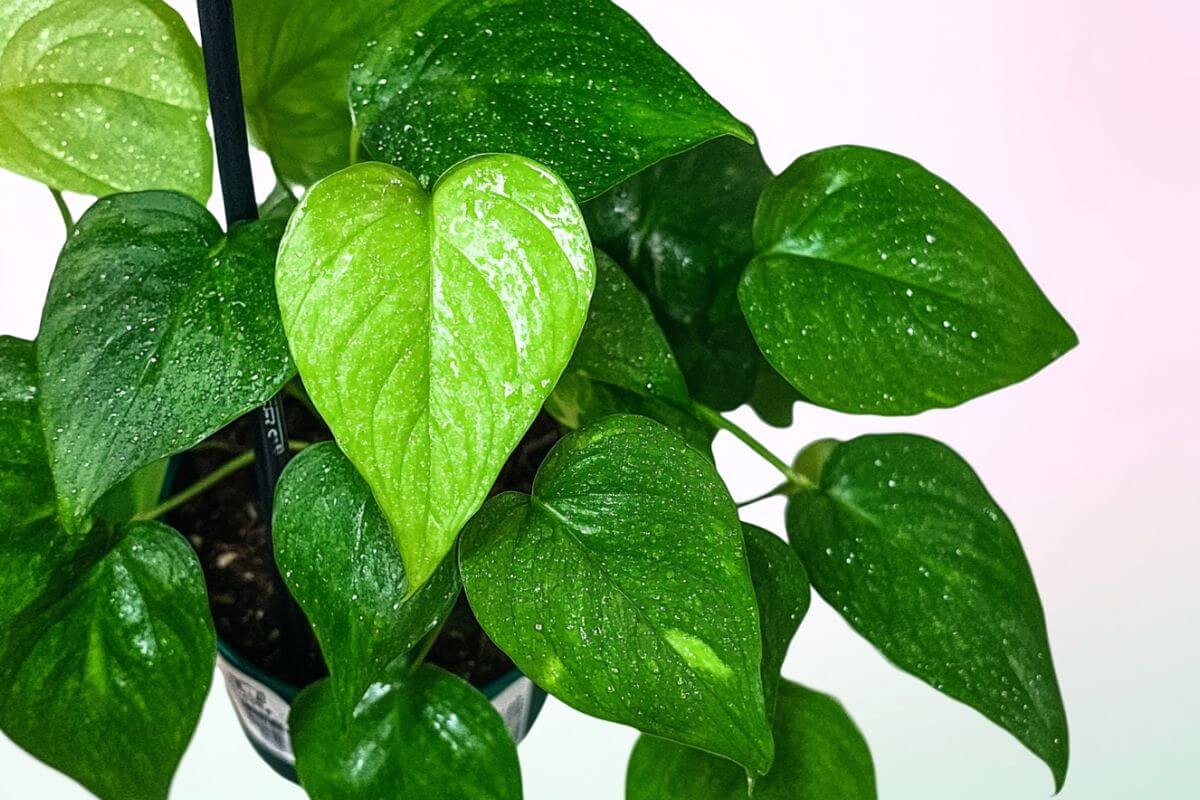
As a tropical plant variety, the Jessenia Pothos prefers a medium to a high level of humidity, so 50 to 70% is recommended.
This pothos can tolerate a lower humidity level, but not completely dry air. Be sure there is some humidity in the air.
To increase humidity levels, use a humidifier. You can also place your pothos on a pebble tray, filled with pretty stones and water.
Another option to increase humidity is to try placing your pothos amid a group of other houseplants. Once arranged near each other, they will raise the humidity level in that specific area of your home because of their proximity to each other.
Misting can also help your plant in the short-term, but excessive misting can become a breeding ground for fungal infections.
Fertilizer for the Jessenia Pothos
The Jessenia is not a heavy feeder, so you can use a basic liquid houseplant fertilizer diluted to half-strength. Fertilize it monthly during the growing season.
Do not overfertilize as this will create salt buildup in the soil bed that can eventually burn the root ball. If you fear that you have exaggerated, flush out your plant’s soil bed and leave it to drain completely.
You can try a dry fish fertilizer to assist in preventing overwatering.
Repotting the Jessenia Pothos
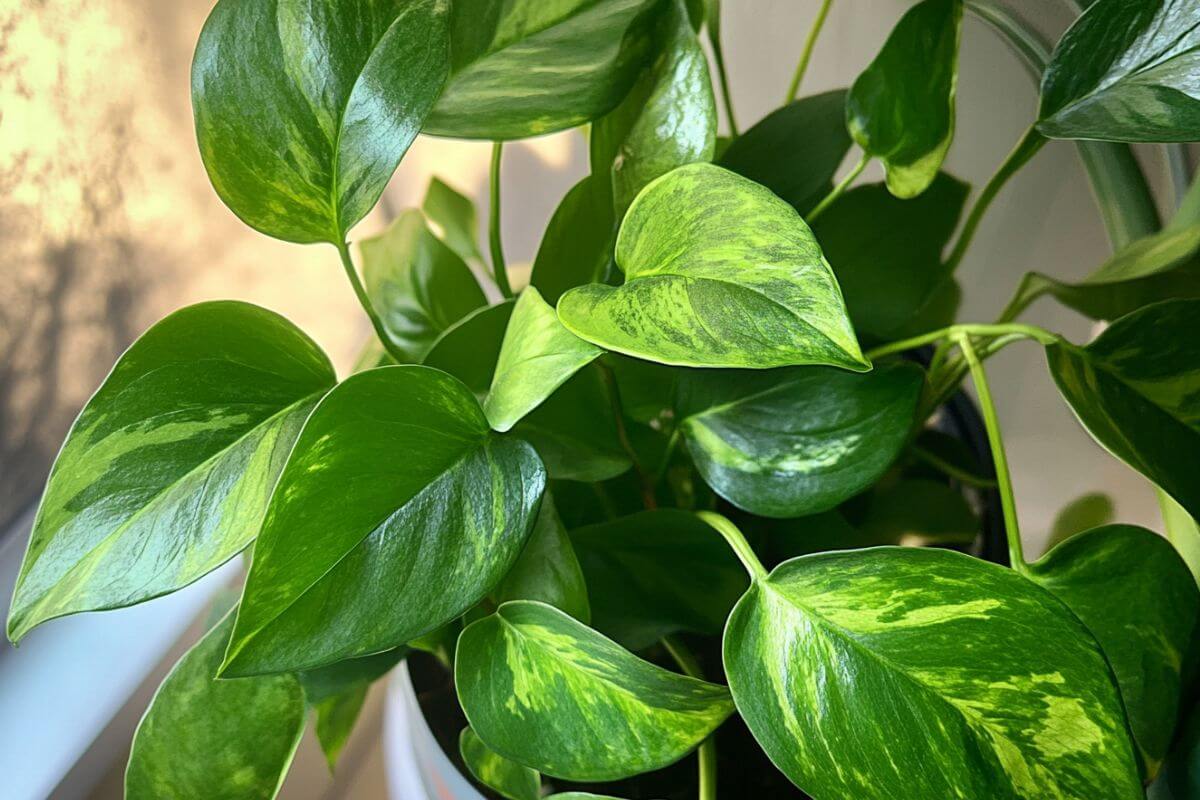
If the Jessenia outgrows its pot, you’ll probably see roots popping out of the drainage holes or the soil surface. You’ll know it’s time to repot if that happens.
Select a pot that is one size bigger than its current pot. I thsould be about one to two inches larger. Fill the new pot with fresh potting soil.
Do not select a pot that is too big though, as too much soil will retain excess water, leading to root rot.
Spring is also the best time for repotting when the plant is at its strongest.
Pruning the Jessenia Pothos
The Jessenia Pothos does not require a great deal of pruning because it’s a slow grower. You can trim it back if it appears to be leggy, to remove dead or damaged leaves, or to maintain the desired shape.
The ideal period for pruning is springtime because it is the beginning of the growing season, so trimming will encourage new growth.
Propagating the Jessenia Pothos
The Jessenia Pothos is an easy plant to propagate with stem cuttings.
Here is how to propagate the Jessenia Pothos:
- Take several cuttings that are about six inches in length.
- With a sterile pair of scissors, cut below a leaf node.
- Remove lower leaves and place your stem cutting in a vase of water.
- Wait four to six weeks until roots develop to at least an inch in length. Change the water in the vase weekly while waiting for root development.
- Transplant the stem cutting into fresh potting soil.
Jessenia Pothos Toxicity and Pets
Unfortunately, the Jessenia Pothos is toxic because it contains calcium oxalate crystals. It is toxic to pets like cats and dogs.
If the plant is ingested, they can cause irritation to pets and even small children. Watch for poisoning symptoms like swelling in the mouth, excessive drooling, and even vomiting.
Call a veterinarian or poison control immediately if you see the symptoms.
Jessenia Pothos Problems, Pests, and Diseases
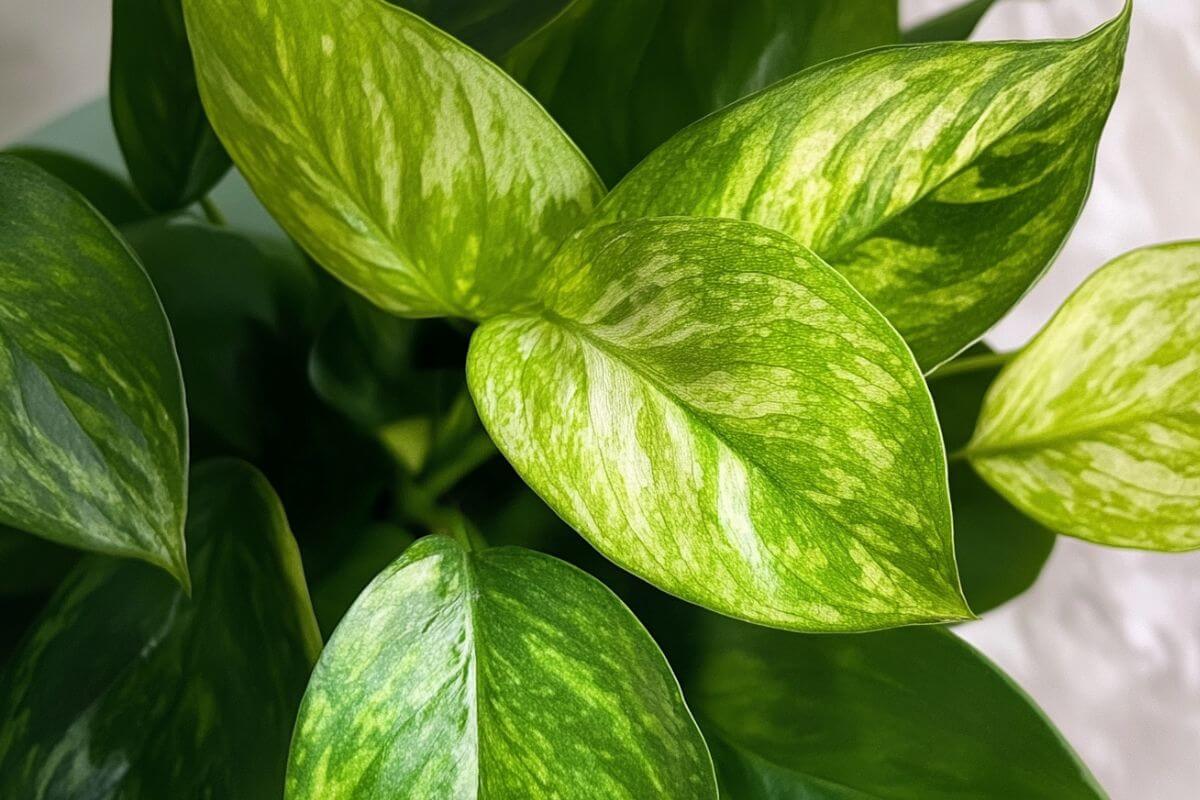
Most Jessenia pothos diseases are a result of excess water. These include root rot and fungal infections.
Root rot will occur when there is insufficient drainage, and the plant is left standing in water.
Fungal infections occur when moisture remains on the leaves too long.
The Jessenia is susceptible to common houseplant pests including thrips, mealybugs, or scale. Your Jessenia can be treated with insecticidal soap or organic neem oil to thwart a pest infestation.
Jessenia Pothos Care Final Thoughts
All in all, the Jessenia Pothos is a beautiful plant that deserves a spot in any home. It grows well indoors and outdoors and is relatively easy to care for.
It is drought tolerant and requires little maintenance. The Jessenia Pothos is a popular indoor plant that looks good year round.
Here are grow guides for other pothos varieties:

